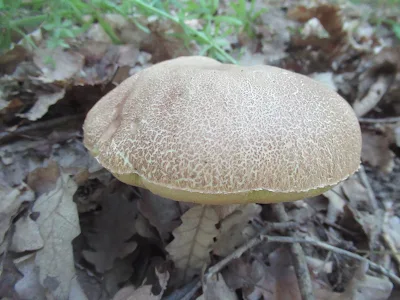Boletus Reticulatus (genus Boletus) | Summer cep mushrooms | Biobritte mushroom center.
Boletus Reticulatus (genus Boletus)
Boletus reticulatus, sometimes referred to as the Summer Cep, is just as good to eat as its famous close relative, Boletus edulis (Cep or Penny Bun Bolete).
A rare find in Britain and Ireland, Boletus reticulatus is much more common in southern Europe, particularly in the southwest of France and parts of Portugal.
This ectomycorrhizal species is found in broadleaf woodlands with beech and less often oaks, but occasionally it occurs under spruces, Boletus reticulatus fruits a little earlier than Boletus edulis.
Most boletes, and all of those that commonly occur in Britain and Ireland, are ectomycorrhizal fungi, forming mutualistic relationships with the root systems of trees or shrubs.
The fungi help the tree to obtain moisture and vital minerals from the soil, and in return, the root system of the tree delivers energy-rich nutrients, the products of photosynthesis, to the fungal mycelium.
Although most trees can survive without their mycorrhizal partners, boletes (and many other kinds of forest-floor fungi) cannot survive without trees; consequently, these so-called 'obligately mycorrhizal' fungi do not occur in open grassland.
In the book Fascinated by Fungi (see the sidebar on this page for brief details and a link to full information, reviews, etc) there is a good selection of magnificent mushroom menus all based on our 'Magnificent Seven', and Boletus edulis is, of course, one of the seven; substituting Boletus aereus in no way detracts from the excellence of a meal.
Taxonomic history
This large, edible bolete was described in 1793 by French mycologist Jean Jacques Paulet (1740 - 1826), who called it Boletus aestivalis; its currently accepted name dates from 1774 when this species was formally described by Jacob Christian Schaeffer and renamed Boletus reticulatus.
Until recently this large to massive bolete was most commonly referred to as Boletus aestivalis (Paulet) Fr.
Use Boletus reticulatus in any recipe where Ceps (Boletus edulis) is called for, as these are two of the world's finest edible fungi and their texture and taste are almost identical.
In the book Fascinated by Fungi - there is a good selection of magnificent mushroom menus all based on our 'Magnificent Seven', and Boletus edulis is, of course, one of the seven; substituting Boletus aereus in no way detracts from the excellence of a meal.
If you want to improve your chances of finding the best edible boletes, it helps a great deal if you look in the right kinds of places and under the trees that these magnificent mushrooms are most commonly linked to.
There is a lot more information on this topic, including chapters detailing which fungi species are obligately mycorrhizal and the kinds of a tree each is associated with, in Fascinated by Fungi.
Top mushroom company.
Mushroom consultants in India.
You can buy all types of mushroom products from the Biobritte cart.
For more info - https://biobritteagrosolutionspvtltd.in/shop.
Contact on a phone or WhatsApp 9923806933 or 7709709816.
Tags - Mushroom farming, mushroom cultivation training, Ganoderma mushroom supplier, mushroom seeds, mushroom spawn company, Biobritte store, Biobritte cart, Biobritte fungi school, Mushroom training, Biobritte mushroom training online, mushroom franchise, mushroom contract farming, mushroom buyback, mushroom repurchase, mushroom spawn supply, mushroom cultivation, organic mushrooms, oyster mushrooms, reishi mushrooms, wood ear mushrooms, cordyceps mushrooms, Is boletus Reticulatus edible? Are there any poisonous Boletus?, Are all Suillus edible?, How can you tell if a bolete mushroom is edible?, boletus atkinsonii, bolete mushroom, boletus reticulatus gljiva, boletus huronensis,




Comments
Post a Comment